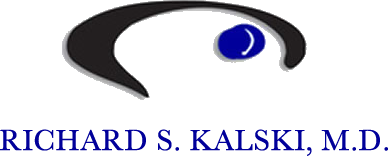Cataract
The eye’s natural lens is mostly made of water and protein. The protein is arranged in a precise way that keeps the lens clear and lets light pass through it. It is located behind the iris and the pupil. The lens works much like a camera lens, focusing light onto the retina at the back of the eye. The lens also adjusts the eye’s focus, letting us see things clearly both up close and far away.
As we age, some of the protein may clump together and start to cloud a small area of the lens. This cloud formation is known as a cataract, and over time, it may grow larger and haze more of the lens, making it more difficult to see.
Cataracts are quite prevalent with “baby boomers” moving into the primary cataract development age range. More than 20 million Americans age 40 and older have cataracts and more than half of all Americans will actually develop cataracts before the age of 80.
Cataract Surgery is a procedure to remove the cloudy lens of your eye and replace it with an artificial lens. Dr. Kalski performs this surgery on an outpatient basis at an ambulatory surgery center, which means that you do not have to stay in the hospital after the surgery. Dr. Kalski performs no injection, sutureless cataract surgery, a common and very safe procedure.
Intraocular Lens (IOL) Options
Dr. Kalski replaces the clouded lens with an intraocular lens (IOL) to correct vision impairment during cataract surgery. Dr. Kalski offers several cataract lens replacement options:
Traditional or Conventional IOL
These IOLs are monofocal, meaning they correct vision at one distance only (far, intermediate, or near.) You must decide which distance you want corrected. Typically a patient choosing this IOL will opt to correct their far distance and wear eyeglasses or a contact lens to read, use a computer, or view objects at arm’s length. If astigmatism (an egg or football shaped eye) is present, glasses or a contact lens will be needed to sharpen vision at all distances. Dr. Kalski uses only advanced aspheric IOL technology when a patient chooses this option. This means that the IOL mimics characteristics of a young human lens, providing the sharpest, most natural vision possible for a patient after cataract surgery.
Toric (Astigmatism Correcting) IOL
These IOLs, like a traditional or conventional IOL, are also monofocal, so a patient must decide to correct far, intermediate, or near vision. These lenses are wonderful options for patients who have astigmatism (an egg or football shaped eye,) typically decreasing a patient’s dependence on glasses or a contact lens for the distance opted to be corrected. The Toric IOL, like the traditional or conventional IOL, incorporates advanced aspheric IOL technology.
Multifocal or Accommodating IOL
Dr. Kalski uses these types of advanced technology aspheric IOLs to correct vision at all distances, including far, intermediate, and near. By combining a multifocal or accommodating IOL with the laser for cataract surgery to correct astigmatism, Dr. Kalski is able to customize cataract surgery results, typically reducing a patient’s dependence on eyeglasses or contact lenses.


